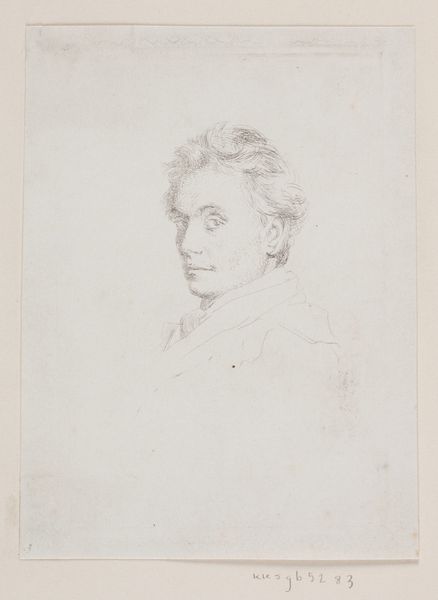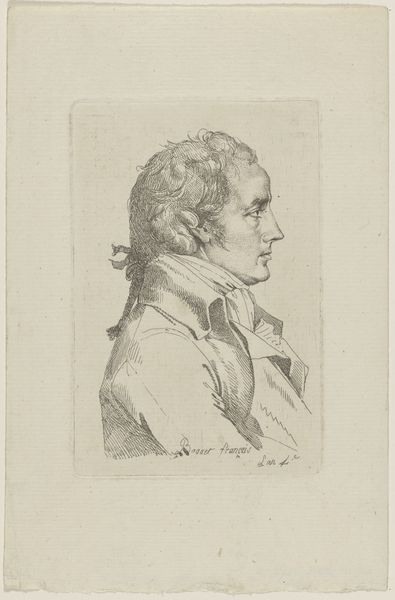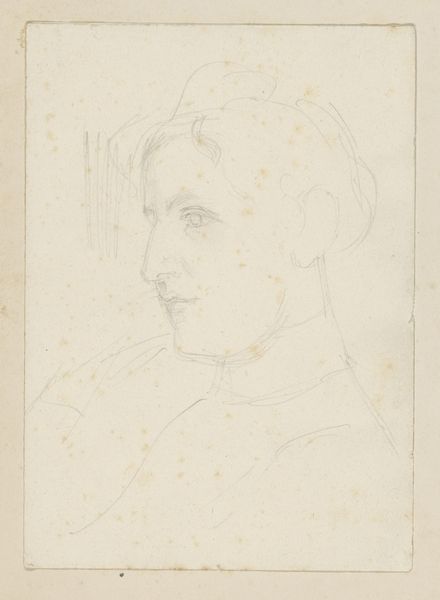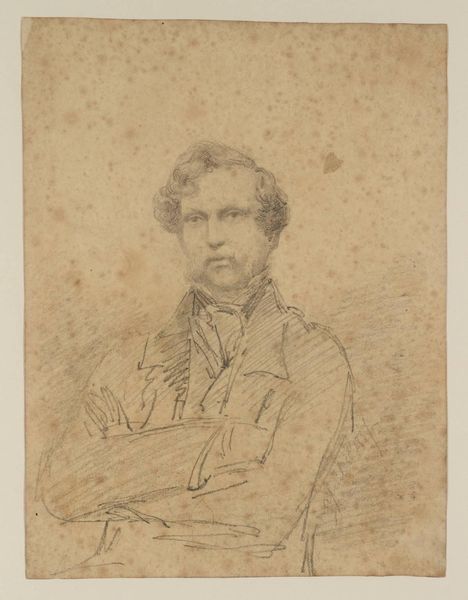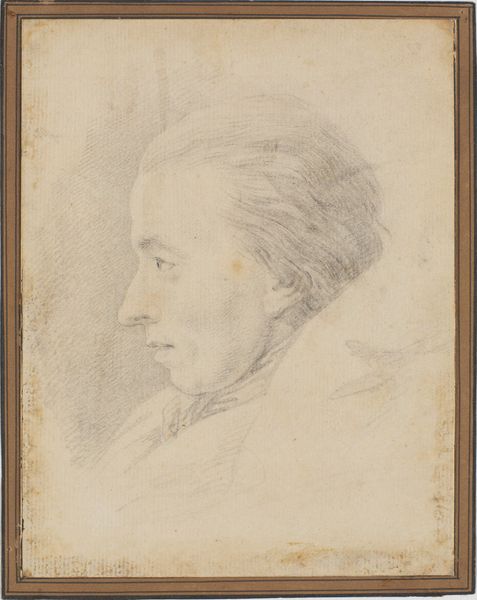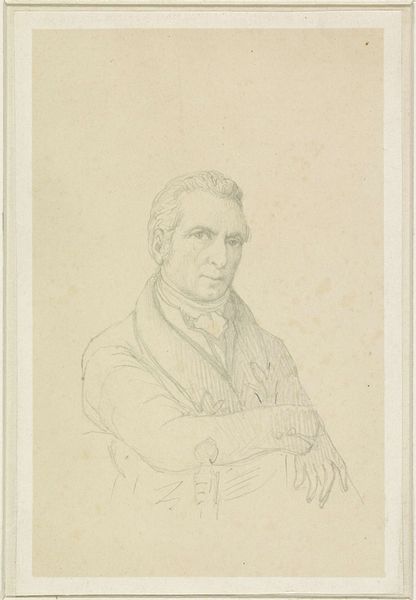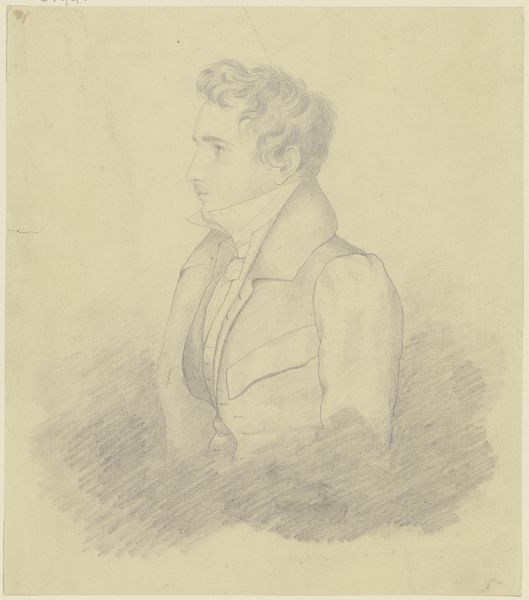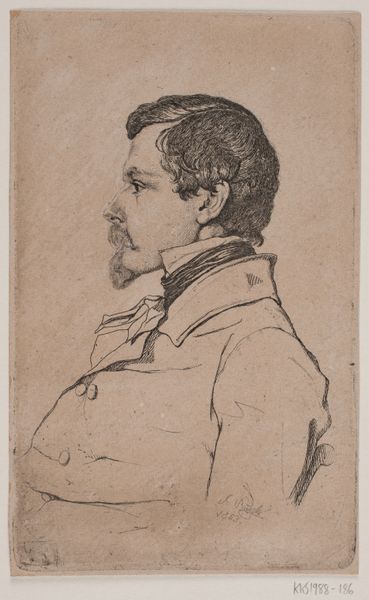
drawing, paper, pencil
#
portrait
#
pencil drawn
#
drawing
#
paper
#
pencil
#
portrait drawing
Copyright: Public Domain
Eugen Eduard Schäffer made this drawing of Peter von Cornelius in Germany, at a time when artists were beginning to explore new ways of representing the human figure. The portrait gives us a glimpse into the artistic circles of 19th-century Germany, a world that was deeply influenced by classical ideals, visible in the smooth lines and balanced composition. Cornelius himself was a prominent figure in the Nazarene movement, who aimed to revive religious art. Schäffer's drawing reflects the Neoclassical aesthetic, a style that sought to emulate the art of ancient Greece and Rome. The drawing may seem simple, but it invites us to consider the complex social networks that shaped artistic production. Art historians rely on archival research and other historical sources to contextualize works like this. By studying the relationships between artists, patrons, and institutions, we can gain a deeper understanding of art's role in society. Ultimately, this portrait reminds us that art is not created in a vacuum, but is always shaped by the world around it.
Comments
No comments
Be the first to comment and join the conversation on the ultimate creative platform.
